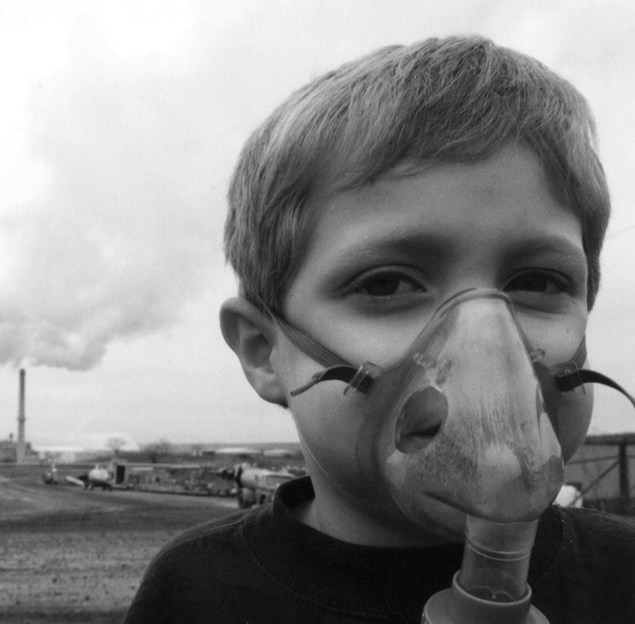Uncategorized
EPA Announces a New Ozone Standard. But Will It Make any Difference In Texas? Not Without a Push.
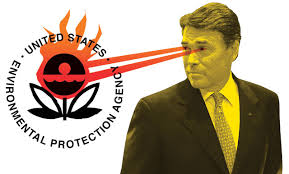 On the day before Thanksgiving EPA Administrator Gina McCarthy went forward with a recommendation to lower the federal ozone, or smog, standard from the current 75 parts per billion (ppb) to somewhere between 65 to 70 ppb, while also agreeing to take public comment on a new standard as low as 60 ppb.
On the day before Thanksgiving EPA Administrator Gina McCarthy went forward with a recommendation to lower the federal ozone, or smog, standard from the current 75 parts per billion (ppb) to somewhere between 65 to 70 ppb, while also agreeing to take public comment on a new standard as low as 60 ppb.
While this might seem like a big step, these are actually the same numbers that have been circulating since George W Bush was president. Since 2008 the EPA's own independent science advisory panel has recommended a national standard in the 60 to 70 range twice – and twice this recommendation has been put on a shelf because of political considerations, most recently in 2011. Now, with the re-election campaign behind them, the Obama Administration has decided to tepidly move forward.
Making the range recommendation it did means that the agency will take comments and mull it over for a year before deciding to issue a specific number in December 2015. There will be at least three national public hearings as part of that comment period – although we don't know the locations of those hearings yet. Once it decides on a particular number for the standard, the Administration most likely will give states until 2025 to comply with it. Or in Texas' case, we should probably say they'll give the state until that year to fail to achieve the standard for the first time.
According to the EPA,
…the new regulation would by 2025 prevent from 320,000 to 960,000 asthma attacks in children, and from 330,000 to 1 million missed school days. It also estimates that by 2025 the rule would prevent 750 to 4,300 premature deaths, 1,400 to 4,300 asthma-related emergency room visits and 65,000 to 180,000 missed workdays.
Besides saving lives and preventing illness, the effect of the new standard will be to broaden the number of counties brought into "non-attainment" by the EPA across the state, and thus subject them to the same ineffectual TCEQ proposals for cleaning up the air DFW has been experiencing for decades.
Reaction from industry and Austin was predictable and predictably wrong-headed. Over the last 20 years, as the national standard has been lowered to account for the increase in knowledge we have about the human health effects of smog, Texas has never supported any change. Any. Never. It's always argued that lowering the standard wasn't necessary to protect public health and too costly to industry – causing economic calamities that never seem to happen. If it was up to Austin, we'd still be choking at the level of 125 ppb that was in effect up until the mid-1990's.
Of course in recent years, Rick Perry's TCEQ has added a nice Orwellian touch by having its "toxicologist" argue that smog isn't really that bad for you.
Maybe that's why no one has had a lot of confidence in the state's ability to write a new smog plan for DFW that will get levels down to the current 75 ppb standard by the deadline of 2018. That plan is being put in the regulatory pipeline by TCEQ and will be going to public comment itself beginning December 26th (yes, that's right, the day after Xmas) and running through January 30th. They'll be a public hearing on it as well in he next 60 days, probably in Arlington, although details haven't been released.
Although it's called a plan, there's no planning in it. The state proposes to do absolutely nothing to reduce pollution from any major smog source. Nada. No new controls on cement kilns, coal plans or gas facilities. Instead it says that the federal government's new gasoline mix, to be introduced in 2017, will produce enough of a decline in smog to get the region "close enough" to the 75 ppb standard. Never mind that that standard is now medically obsolete according to the EPA, and God forbid the state should require more pollution controls to aim for the lower 65-70 level we all know is on its way. Nope. At last count there were still three local monitors that hadn't even reached the 75 ppb level by 2018 in the state's computer model prediction, and that result relied on a steep decline in oil and gas drilling that may or may not happen.
According to the Clean Air Act, the state is supposed to be requiring major sources of smog pollution in DFW to install all "Reasonably-Achievable Control Measures"(RACM) that could help speed our compliance with the 75 ppb standard. This would include things like SCR (Selective Catalytic Reduction) on the Midlothian cement plants and East Texas coal plants and electrification of compressors in the Barnett Shale gas patch. However, Austin says those ideas are not "technically or economically reasonable."
The state might have a point – if companies within those same industries weren't already turning to these options voluntarily. For example, Holcim has applied for a permit to install SCR in one of its Midlothian cement kilns. So is Rick Perry's TCEQ saying a multinational cement company operating in the private market with two competitors down the road is installing a piece of pollution control equipment out of the goodness of its bottom-lined heart that's neither technically or economically feasible? Are Holcim's managers a bunch of profit-losing unrealistic treehuggers? Hardly.
Likewise, SCR has been installed on plenty of US coal plants – just not on the oldest dirtiest one in East Texas that need it the most. It's not a new technology at all. Same with electric compressors. In fact, those are required now under some city drilling ordinances. Wouldn't you hear banshee-like howls from the oil and gas industry, much less lawsuits, over those ordinances if that was not a technological or economically feasible alternative? In fact, electrification saves money by reducing the waste of gas product it takes to run conventionally-powered compressors.
This is the ridiculous result of a regulatory agency being an extension of a presidential campaign that promises to be easy on business and tough on the EPA. The order has come down from on high that no new pollution control requirements are to be sought by TCEQ in these smog plans, no matter how silly it makes the state look, or how much dirty air Texas residents have to breathe.
That's why in addition to calling for these kinds of pollution controls in the public comment process, and only having those comments fall on deaf ears in Austin, citizens must also put pressure on the EPA – too often the state's enabler in these matters.
As the ultimate authority on enforcing the Clean Air Act, the EPA can reject the state's plan and send it back to the drawing board with specific recommendations, or substitute a new one of its own creation – like it just had to do with the state's terrible haze-prevention plan that would have taken 150 years to work.
Certainly citizens have to put their case for federal action on the record during the TCEQ public comment period, but then we have to take that case directly to EPA and make them live up to their own regulations. And if they won't, then the next stop may have to be federal court.
If the last 20 years of clean air wars in Texas has taught us anything, it's that it won't matter what new smog standard the EPA sets, or whether the current one is being enforced or not, unless a federal agency or court, prompted by citizen action, make it matter.
“And what if the near-sighted Boy Scout wins?” *
 Congratulations to Frack Free Denton.
Congratulations to Frack Free Denton.
State Public Meeting Tonight on New Permit for Holcim’s Midlothian Cement Plant
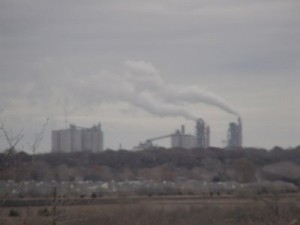 There's a public meeting hosted by TCEQ at 7pm tonight concerning the new permit for Holcim's Midlothian cement plant. It's taking place at the Midlothian Conference Center, at 1 community Center Road, right off Hwy 287. Here's a map if you need one.
There's a public meeting hosted by TCEQ at 7pm tonight concerning the new permit for Holcim's Midlothian cement plant. It's taking place at the Midlothian Conference Center, at 1 community Center Road, right off Hwy 287. Here's a map if you need one.
This is your only chance to ask questions and raise concerns about Holcim's new permit, or any other aspect of Holcim operations in a public forum in 2014.
Remember that Holcim's pollution contributes to higher smog levels as far north as Denton and Wise Counties. Along with TXI and Ash Grove, its plumes have been associated with higher childhood asthmarates in southeast Tarrant County.
Holcim is also still the only Midlothain cement plant still blasting for rock. The others use machinery to mine limestone, Holcim uses ammonium nitrate, the same explosives that caused the West, Texas catastrophe.
The good news is that Holcim has decided to install Selective Catalytic Reduction (SCR) pollution control on one of their two large cement kilns. That's what the new permit mostly is about. Although well-known for reducing smog-forming Nitrogen Oxide (NOx) in the European cement industry, Holcim is using it to reduce Total Hydrocarbons – a category of pollutionthat includes toluene, benzene, and xylene.
You can read about how important a victory SCR is for all DFW breathers here. It's been a 15 year effort. Holcim's decision to install SCR should be celebrated.
But important questions remain about when the SCR unit will become operational and how reductions in airpollution like NOx will be tracked by the company.
SCR is only being installed on one of two Holcim kilns in Midlothian. The other kiln is getting a "Regenerative Thermal Oxidizer" – the equivalent of a flare on a gas well – to burn off its total Hydrocarbons.
Because they're combustion-based, RTOs increase NOx pollution. How much, and how Holcim can catch that increase before it goes up the stack is alsothe subject of the permit.
The public meeting on Monday is not a hearing. But it is the only public forum where citizens can thank Holcim for finally installing SCR, as well as express their concerns and ask questions about the permit.
We know it's a busy time of year, and it's the day before Election Day, but do your lungs a favor and attend a meeting about a permit that can affect them for good or bad.
Feds: Fracking Site Tests Show 15 of 17 Employees Exceeded Benzene Exposure Limits
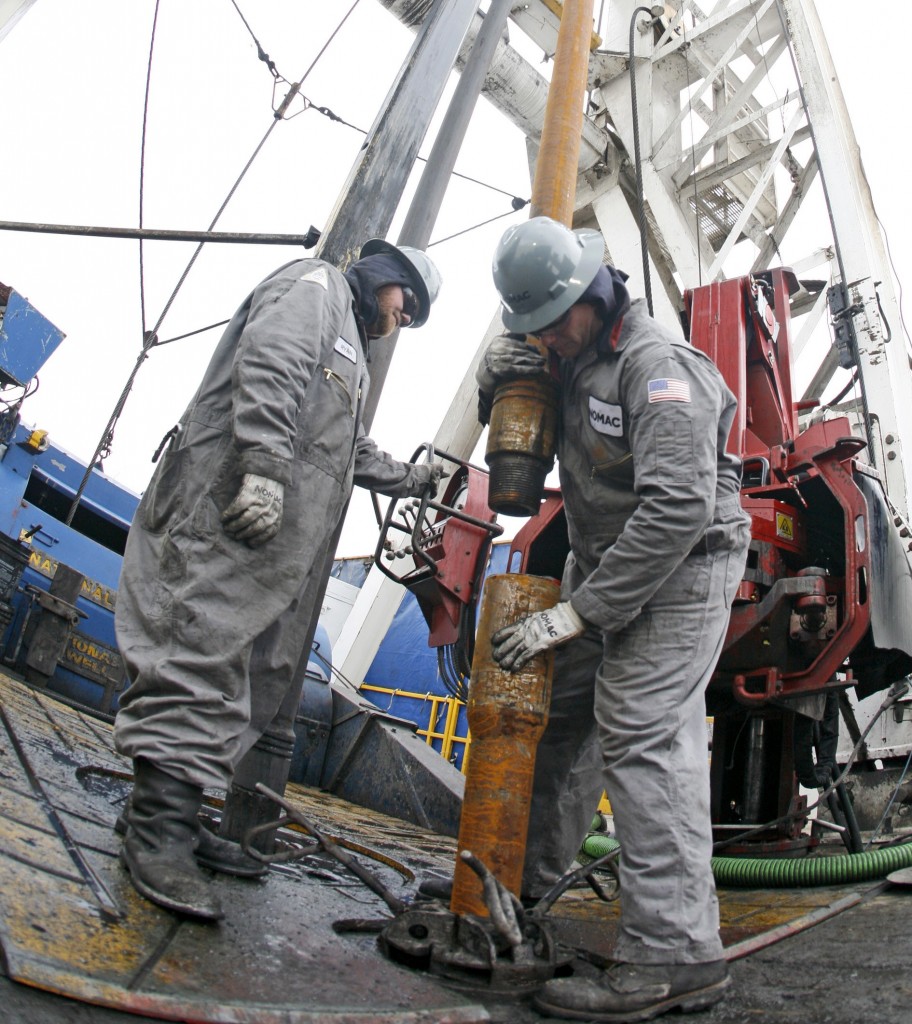 On Labor Day we wrote about the fact that workers employed by polluters are often as much at risk from exposure to the polluters' poisons as near-by homeowners. A new peer-reviewed study of six fracking sites in Colorado and Wyoming published by the National Institute of Occupational Heath and Safety (NIOSH) is fresh proof of this, showing 15 of 17 tests for Benzene exposure among workers who were monitoring on-site fracking well "flowback" exceeded the federal eight-hour exposure limit.
On Labor Day we wrote about the fact that workers employed by polluters are often as much at risk from exposure to the polluters' poisons as near-by homeowners. A new peer-reviewed study of six fracking sites in Colorado and Wyoming published by the National Institute of Occupational Heath and Safety (NIOSH) is fresh proof of this, showing 15 of 17 tests for Benzene exposure among workers who were monitoring on-site fracking well "flowback" exceeded the federal eight-hour exposure limit.
The study looked at drill site workers who use a gauge to measure the amount of "flowback" water that returns after a frack job is initiated. Flowback is the regurgitation of the fracking fluids from the well itself. It's collected on the surface after hydraulic fracturing is completed.
Benzene is a known carcinogen that's routinely present in fracking flowback water. It’s the same poison found in gasoline, cigarette smoke and a lot of chemical manufacturing and refining. It's been directly linked or associated with leukemia and other conditions, such as Acute Myelogenous Leukemia (AML), Chronic Myelogenous Leukemia (CML), Acute Lymphocytic Leukemia (ALL), Chronic Lymphocytic Leukemia (CLL), Hairy Cell Leukemia (HCL), Non-Hodgkin’s Lymphoma, Multiple Myeloma, Myelodysplastic Syndrome (MDL), Myelofibrosis and Myeloid Metaplasia, Aplastic Anemia and Thrombocytopenic Purpura.
How Davids Beat Goliaths: Tenacity, Opportunism and, Yes, Money…
 In a 2009 magazine essay that's become a standard hand-out of ours, author Malcolm Gladwell examines everything from a full-court press in girl's basketball to the military tactics used by Lawrence of Arabia in identifying the qualities that make successful underdogs.
In a 2009 magazine essay that's become a standard hand-out of ours, author Malcolm Gladwell examines everything from a full-court press in girl's basketball to the military tactics used by Lawrence of Arabia in identifying the qualities that make successful underdogs.
They don't play by their opponents' rules.
They're opportunistic.
They're relentless.
Time and again, he finds that determination trumps everything else.
Downwinders at Risk is one of the best examples of this formula.
There are larger environmental groups. There are groups with more expertise. But you'd be hard-pressed to find a more determined group than Downwinders at Risk. Why? Focus and persistence.
Focus, because we concentrate on local air pollution issues and nothing else.
Persistence, because we never give up, even if it takes years to win the fight.
Despite a hostile Governor, unfriendly state agencies, and industry opposition, Downwinders has won huge, unprecedented victories for cleaner air in North Texas using not much else than its own sweat equity and the organized energy of local DFW residents like yourself.
But even the most determined insurgents need money.
Once a year in September, Dallas-based Communities Foundation of Texas hosts a regional "Giving Day" for all DFW non-profits, when online donations of $25 or more can be matched or multiplied by the Foundation itself or other donors. Your online contribution actually helps us grow more money for the cause.
This year's Giving Day is Thursday, September 18th, 6 am to 12 Midnight.
Downwinders is using this 2014 Giving Day to try and raise $7500 – enough to pay for staff work for three months.
That's couch change to most groups, but it's 90 days of determined and focused work for us – and your lungs.
How you can help:
On September 18th, just go online to northtexasgivingday.org click the "Environment" category on the right hand side of the page and find our familiar child and inhaler logo:
Click on it and donate $25 or more.
That's all there is to it. It's easy and it'll make a huge difference to us. You can follow our progress on the 18th on our FaceBook page.
Why you should help:
We're organizing resistance to another state "do-nothing" clean air plan that will continue to keep DFW the "Dirty Air Capitol of Texas."
We're pressing for the Midlothian cement plants to install state-of-the art pollution controls that are already in place in Europe.
We're making fracking a regional air quality issue, fighting to bring new studies and controls to the attention of the media and officials.
We're exporting the new, citizen-driven and more protective "Dallas Model" to replace the obsolete, industry-based Fort Worth Model" of gas drilling regulations.
We're speaking out against the City of Frisco's plan to leave 50 years of Exide lead smelter waste in the middle of town rather than hauling it off to a proper hazardous waste disposal site.
Thanks for your support and consideration.
DFW Still Dirty Air Capital of Texas
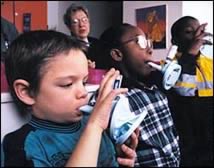 Here's the orignal version of Sunday's Star-Telegram op-ed piece responding to former Arlington Mayor and EPA Regional Administrator Richard Greene's assertion that DFW air quality "is getting better." You can see the published online version here. It's a pretty good sumary of the current 2014 situation…
Here's the orignal version of Sunday's Star-Telegram op-ed piece responding to former Arlington Mayor and EPA Regional Administrator Richard Greene's assertion that DFW air quality "is getting better." You can see the published online version here. It's a pretty good sumary of the current 2014 situation…
I don’t know who or what prompted my friend Mayor Greene to write what he did about DFW air quality last week, but the language he used sure looked like the same “don’t worry, be happy” arguments that officials at the Texas Commission on Environmental Quality promote these days.
Unfortunately for the Mayor, his column ran just after the worst week of DFW ozone readings in 2014 re-established the fact that North Texas has replaced Houston as the metropolitan area with the most abysmal air quality in Texas. A single five-day reminder of what real summer looks like was enough to produce four readings above the 1997 smog standard that DFW should have conquered years ago. In contrast, Houston hasn’t had a single reading of that severity so far this year. DFW also once again leads Houston in the total number of readings above the current smog standard.
Whenever state officials want to remind DFW residents how much air quality has improved, they, like Mayor Greene, start from a decade or two ago. That’s because if they started from 2008, or roughly the time Rick Perry decided to run for president, they couldn’t draw the same conclusion.
Since then air quality in DFW has stagnated. In fact, the 2011 TCEQ plan rhetorically aimed at clearing that old 1997 smog standard actually made ozone worse. It didn’t include any attempts to control major industrial sources of air pollution like the Midlothian cement plants, the East Texas coal plants, or the thousands of oil and gas sources that began operation in the Barnett Shale over the last eight years. It was the single worst failure of air quality planning in Texas history – so far.
But it may have a sequel because the Perry administration is once again drafting a lazy anti-smog plan that will not require any of those major sources to reduce pollution, instead relying on a new EPA-mandated gasoline formula to get the region “close enough” to the current standard (ironic isn’t it?). According to its own predictions however, “close enough” means the state is satisfied to leave at least four DFW monitors representing millions of residents in Tarrant County and Denton out of compliance.
It’s actually much worse than that. The smog standard the state claims it will be “close enough” to is one we already know is not protective of public health. A survey of peer-reviewed, journal-published studies over the last decade indicate widespread health effects, including heart attacks, strokes, and respiratory disease are occurring at levels of smog currently defined as “safe.” That’s why an independent panel of scientists recently recommended the EPA lower the national smog standard. The Agency must decide to accept or reject that recommendation by December, about the same time the state will be holding public hearings on its newest do-nothing plan.
So while TCEQ is submitting a plan that won’t even achieve the current smog standard in DFW, the evidence points to a need to do much, much better.
This summer’s kind weather may yet see annual smog averages drop. But if you believe this will be the norm in coming years, then you might also believe we’re on the verge of lasting peace in the Middle East or Justin Bieber is finally reaching maturity.
In its historic 2009 study, Cook Children’s Hospital found rates of childhood asthma in North Texas “far exceeded” state and national averages. Texas Department of State Health Services data show DFW has one of the highest hospitalization rates for childhood asthma in the state, with DFW accounting for a third of the $172 million spent admitting kids for treatment in 2011 alone.
We need a more serious approach to clean air than “close enough” to an already obsolete smog standard.
Jim Schermbeck is Director of Downwinders at Risk, a 20-year old DFW-based clean air group.
Show Me the Money: Putting a Dollar Value on Climate Change
 How do you monetize a human life? How about when that life is impaired with an illness? What's it worth to you not having to rush your child to the emergency room when they're turning blue during an asthma attack? What about to prevent a heart attack?
How do you monetize a human life? How about when that life is impaired with an illness? What's it worth to you not having to rush your child to the emergency room when they're turning blue during an asthma attack? What about to prevent a heart attack?
These days we live in a cost-benefit world that demands this kind of accounting for things that should be accepted at face value. Want to talk about the advantages of cleaner air? You have to be able to put a price tag on it. And, with a small slight of hand, that's what the Obama administration did when it touted all the economic reasons why its new carbon capture rule for existing power plants was a plus for the country.
Carbon pollution itself doesn't directly cause the kind of death and suffering among humans that the Clean Air Act was written to address. Oh sure, it might doom countless species, raise sea levels, and cause global catastrophe, but there's not a way to tie it directly to more mundane respiratory diseases or early mortality that we (well, everyone but the Texas Commission on Environmental Quality) associate with "air pollution."
Instead of pricing catastrophic planetary effects, no matter how self-evident their true costs might be, the EPA instead sought out to tag the out of pocket expenses saved by Americans in cutting pollution associated with carbon, like Particulate Matter and smog. Most of the $55 to $93 billion in economic gains cited by the EPA last week came from these co-benefits, rather than from added spending and jobs in renewable energy or preventing massive crop failures. Otherwise, the new rules might not have been "worth it" from a regulatory point of view. The administration projects the new rules will cause the loss of between 79,900 and 80,400 full-time equivalent jobs in power generation versus 111,800 full-time equivalent jobs in renewable or energy efficiency work, basically a wash.
Want to know the price of an asthma attack? $58. Multiply that by 140,000 to 150,000 across the country and you have the approximately $9 million saved over the next 15 years by reducing soot and smog – a side effect of reducing carbon pollution under the rules.
Non-fatal heart attacks cost an average of $98,000 in health care costs and lost earning power among under-25-year-olds versus an average of $200,000 among 55- to 64-year-olds, because this later demographic is supposedly reaching its peak earning power. Preventing a six-day bronchitis episode is valued at $430.
By far the largest single health impact from the carbon rules seems to come from the forecasted reduction in deaths associated with PM pollution, quickly becoming the most insidious and widespread air pollution threat in the world, and smog. EPA economists estimated savings of between $27.3 billion and $66.7 billion from lower levels of PM 2.5 (fine particles smaller than 2.5 microns in size) and Nitrogen Oxide by preventing 2,700 and 6,600 early deaths.
Most of these numbers come from anticipated cleaner or closed coal plants. It's not unusual for EPA to do accounting this way for the rules it's proposing, although it's the first time it's used it to justify carbon pollution regs.
Will these kinds of arguments win over the skeptics? Doubtful, but that's not who they're aimed at. Instead the administration is using these numbers as talking points to the media and the public in hopes of creating momentum the skeptics can't reverse or rationalize. After all, it's hard for even Rick Perry to call out your child's asthma attacks as unimportant or inconsequential.
Downwinders at Risk Joins Groups in Filing EPA Petition Demanding Federal Limits on Toxic Oil & Gas Air Pollution from Well Sites
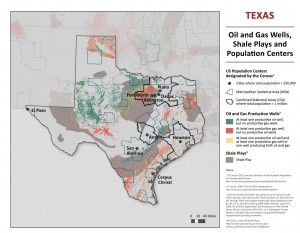 Downwinders at Risk and over 60 other local, state and national groups filed a petition Tuesday urging the U.S. Environmental Protection Agency (EPA) to protect public health by setting pollution limits on oil and gas wells and associated equipment in population centers around the U.S.
Downwinders at Risk and over 60 other local, state and national groups filed a petition Tuesday urging the U.S. Environmental Protection Agency (EPA) to protect public health by setting pollution limits on oil and gas wells and associated equipment in population centers around the U.S.
Led by the public interest law organization Earthjustice, the nationwide alliance also includes The Clean Air Council, Clean Air Taskforce, Environmental Defense Fund, Global Community Monitor, Natural Resources Defense Council, Physicians for Social Responsibility-Los Angeles, Sierra Club, and WildEarth Guardians.
Making the case to require oil and gas companies to limit toxic air pollution from oil and gas wells in urban, suburban and other populated areas as the Clean Air Act expressly provides, the petition urges the EPA to act quickly to protect public health.
In recent years, the pace of oil and gas drilling has increased drastically. As of 2011, oil and gas wells in the U.S. numbered more than 1.04 million. Current estimates project that as many as 45,000 new wells could be drilled each year through 2035.
Available data suggest that at least 100,000 tons per year of hazardous air pollution from oil and gas well sites—such as benzene, formaldehyde, and naphthalene—are currently going freely into the air. These pollutants have been linked to respiratory and neurological problems, birth defects, and cancer.
“More than 150 million Americans now live near oil and gas wells or above shale areas where companies are looking to drill or engage in hydraulic fracturing, and EPA needs to set standards that restrict the hazardous air pollutants they put into the air,” said Earthjustice attorney Emma Cheuse, who filed the petition on behalf of the groups.
A significant number of those millions are Texans, who are hosting at least four large gas and oil plays in the state, including the Barnett Shale that overlaps large sections of the DFW metropolitan area.
"Almost a decade of un-and-under-regulated fracking has transformed North Texas into a sacrifice zone for the gas industry, with conservative estimates of over 1,000 tons of hazardous air pollution being released annually from industry sources. Breathing this toxic air pollution has left a well-documented trail of illness and disease throughout the Barnett Shale. EPA needs to do its job and protect frontline victims of fracking by reducing the toxic fallout from the practice," said Downwinders at Risk Director Jim Schermbeck.
Besides the DFW Metropolitan area, Houston, Austin, San Antonio, Corpus Christi, Beaumont-Port Arthur, Waxo, Lubbock, Amarillo, Laredo, College Station-Bryan, Killeen-Temple-Fort Hood, McAllen-Edinburg-Mission, Longview, Tyler, Abilene, Wichita Falls, Odessa, Midland, Sherman-Denison, Victoria, San Angelo, and Texarkana would also be protected by the new regulations.
Facilities presently not regulated for their toxic air pollution that would be covered under the petition include new and existing oil and gas wells, existing hydraulically fractured gas wells (unless modified), new hydraulically fractured gas wells that are exempted, most equipment associated with wells, including: many storage vessels, pneumatic controllers, compressors, and equipment leaks.
The petition filed today, as well as a list of the groups filing, can be found at: http://earthjustice.org/documents/legal-document/2014-petition-for-federal-limits-on-toxic-air-pollution-from-oil-gas-wells
To see the population centers that would receive protection under new EPA rules, look at Table 5 of the petition, or the maps listed below.
Don’t Let Rick Perry Hold Your Lungs Hostage
Got Asthma?
Live Next to a Gas Site?
Downwind of a Cement Plant?
Just Concerned About What's in that Layer of Haze on the Horizon?
No Matter Your Cause, You Have a Stake in Building a Better DFW Anti-Smog Plan.
Beginning this month, things get serious about regional air quality.
THIS SUNDAY – Citizens Strategy Meeting on the new DFW anti-smog plan/ 3-5 pm /Texas Campaign for the Environment offices/3303 Lee Parkway, Dallas (across from Lee Park) Sponsored by State Representative Lon Burnam and Downiwnders at Risk.
THURSDAY, APRIL 17th – Next official local meeting on the DFW anti-smog plan/10 am to 1 pm/ North Central Texas Council of Governments HQ/616 Six Flags Road, Arlington (just down the street from the entrance to the amusement park)
While the Texas Commission on Environmental Quality is moving ahead with a scheme that avoids new pollution controls, local officials are more skeptical of that approach and and are talking about additional "control measures" on sources of air pollution like cars, power plants, the gas industry, and cement kilns.
Despite three state air plans over 15 years, DFW has yet to meet the 1997 federal smog standard of 85 parts per billion (ppb) of ozone.
Now, even as we're still trying to meet an almost 20-year smog standard, a new standard of 75 ppb is being enforced across the country for the first time. The deadline for meeting it is 2018. The plan for how to meet it must be turned into EPA by 2015 for a three year implementation. That plan is what's being written now. And you can help make it much better.
THE MYTH OF IMPROVING AIR QUALITY
In 2009, DFW's three year running average for smog pollution was 86 ppb of ozone. Last year it was 87ppb. Is that progress to you? The state says it is.
The fact is that after a decade of steadily falling smog levels, that decline has stalled over the last five years. Is it merely coincidence that those five years correspond to the Barnett Shale gas play maturing in the middle of DFW? Or the development of gas fields to the Southeast of us? If it's not new gas emissions, what's causing this stagnation in progress? The state says it doesn't know. But the TCEQ is sure that it can get smog levels down without new pollution controls on any industry – including gas and oil. Just like it was sure in 2011, when the state proposed its last plan without any new industry controls and guaranteed we'd be enjoying record-low smog levels by 2013. Instead, smog levels actually rose.
The reality is that Austin is trying to avoid any new controls at all while Rick Perry is running for President. Our lungs are being held hostage by Governor Perry's political ambitions. That's why we need your help.
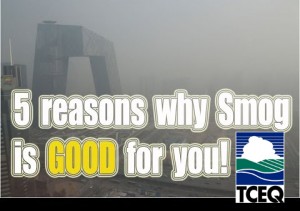 THE TCEQ RATIONALE FOR INACTION
THE TCEQ RATIONALE FOR INACTION
TCEQ says that a new federal gasoline mix with lower sulfur content will make car exhaust so much cleaner that no additional measures will be necessary to meet the new 75 ppb smog standard by the deadline of 2018. It says it's computer program tells it so. But that new mix won't be on the market until 2017, impacting only one summer out of three that'll be used by EPA to give us our running average. Even then, to reach the new goal of no more than 75 ppb of ozone by 2018, DFW smog levels would have to drop by double digits in just four years. That's never happened before. And many of us don't believe it has any chance of happening without reducing pollution from the gas industry, the Midlothian cement plants, and other large sources. We need to expose the TCEQ's junk science and make sure safe and legal air for six million people is more important than Rick Perry's presidential ambitions.
A CHANCE TO REDUCE POLLUTION FROM ALL SOURCES
The most successful air plan DFW ever had was in 2007, when coal plants, cement plants, vehicles and other sources of air pollution were addressed through new control measures.
That was the last time we had a comprehensive approach. And we almost met the 1997 85 ppb standard. This new plan offers an opportunity to do the same – if citizens can get organized. The DFW air plan is the "biggest fracking fight that isn't being fought" with a chance to seek region-wide pollution controls on the gas industry. It's a chance to bring state-of-the-art pollution controls to the Midlothian cement plants and East Texas coal plants. It's a chance to commit North Texas to more renewable energy, mass transit, and cleaner technologies of all kinds.
But first you have to show up.
Please come to the public strategy meeting this Sunday in Dallas to learn more about this clean air plan and what's being done to improve it.
Then on April 17th, come to the next official meeting of the DFW clean air plan in Arlington to listen and comment on discussions about local air quality.
These meetings are open to the public and public participation. Tell officials you want MORE pollution controls on ALL sources.
Don't Let Rick Perry continue to hold your lungs hostage.
Planning Your Social Change
 Over the last couple of months, the victory by residents to impose a "de facto ban" on fracking in Dallas has been invoked as a rallying cry by citizens in a number of different places. From Denton, to Mansfield, to Los Angeles, to Move On, the fact that JR's hometown has made it difficult to drill with impunity is seen as a significant blow to the relentless rolling wave of rigs, tanks and pipes that's transformed DFW into an urban gas field over the past decade. It's given aid and comfort to those trying to face down the gas industry elsewhere, and provided a more progressive model of regulation.
Over the last couple of months, the victory by residents to impose a "de facto ban" on fracking in Dallas has been invoked as a rallying cry by citizens in a number of different places. From Denton, to Mansfield, to Los Angeles, to Move On, the fact that JR's hometown has made it difficult to drill with impunity is seen as a significant blow to the relentless rolling wave of rigs, tanks and pipes that's transformed DFW into an urban gas field over the past decade. It's given aid and comfort to those trying to face down the gas industry elsewhere, and provided a more progressive model of regulation.
That isn't a happy accident of a local NIMBY fight. It's by design. Four years ago, it was the intent of Dallas organizers to make it so, and it was absolutely essential to Downwinders that the Dallas fight be a strategic one, that it have reverberations far beyond the city's limits.
In 2010, Downwinders had to justify why it wanted to take on fracking in Dallas. The group had just transformed itself from one concerned mostly with local cement plant air pollution to one taking up the cause of the entire DFW airshed. If we were jumping into the fracking controversy for the first time, where would we land? Why Dallas and not someplace else? How could we be sure our investment of scarce organizational resources would benefit clean air and environmental health more in this fight than others?
The Timing: Dallas was the last city in the Barnett to actually process gas well permits. It still hadn't done so in 2010 when the City Plan Commission was gearing up for its first "Special Use Permit" hearings. Despite most of the western side of the Metromess already being inundated by industry, fracking was a fresh fight over a new kind of industrial activity that Dallas hadn't hosted. Any one who's done this before will tell you it's always easier to stop something new than after it already starts. They'll also tell you that when you have a choice, don't engage the opposition on their own turf. Try to play on your own field or at least a neutral one. Dallas offered the last and best chance in the Barnett to fight fracking as a new thing on a neutral field.
The Issue: Because the exemptions fracking needed to operate in urban areas only became reality in the 2005 Energy Bill, examination of its external environmental costs took a while to, er, surface. But research was finally beginning to catch up to the facts. In 2009, Downwinders' consultant, SMU Professor, and future EPA Regional Administrator Al Armendariz's landmark report for EDF on smog pollution from the gas industry was the information that made many of us sit up and take notice of fracking as a threat to regional air quality. Through its leadership in the cement plant wars, Downwinders had worked its way into the DFW air quality planning process. We knew smog. We didn't know gas mining made smog much worse – and neither did anyone else – until Al's report. His work demonstrated why drilling in North Texas would make it harder for the area to quit violating the Clean Air Act. As a group that had just changed its mission to protect North Texas air quality, this was information hard to ignore. Suddenly the fight against urban fracking in Dallas was a new front in an old war.
The Politics: Dallas had been an ally of Downwinders in the cement wars, passing the first "green cement" procurement ordinance in the nation in 2007. Mayor Laura Miller lead the fight against Rick Perry's rush to permit over a dozen new dirty coal plants. It was a leader among local municipalities in addressing climate change and actually had an annual goal of reducing its carbon footprint as a city. It paid lip service to the language of "sustainability." Dallas was traditionally more progressive than other city governments on environmental issues (don't laugh). We could use all of this past action and rhetoric – especially on smog – to press our case in Big D in a way that no other local government allowed, because it had the record of concern. Always use your opponent's language against them if you can. From an environmental point of view, if you couldn't get green-friendly Dallas to pass a better, more modern drilling policy, you were going to have a hard time doing it any place else in the Barnett.
At the same time, the then-current city council was seeing the rise of a new generation of Dallas political leadership through Angela Hunt sparring with the old establishment. One of her issues was gas drilling in Dallas. Organizers already had a friend on the horseshoe.
The Stage: Much to the chagrin of Fort Worth, Arlington and other North Texas cities, Dallas is the flagship for the region. It's still the region's largest municipality. It's still the region's media center. It's home to the Cowboys, and JR, and the Triple Underpass. Things that happen in Dallas tend to get more coverage than they would if they were taking place in, say, Mesquite, or Burleson. Politics is under more of a microscope. There are still reporters assigned to cover nothing but City Hall goins-on. There were plenty of gas permit fights in play in 2010. But only those in Dallas promised to provide the kind of oversized stage with the potential for blow-by-blow reporting of the battle that would transform the permit fights into the Dallas Gas Wars.
The Definition of Winning: You don't hear anybody going around boasting about how hard residents fought before they lost the fight to completely ban fracking in Dallas out right. But that would have been the result had residents listened to the most strident voices among their ranks. There were calls for a direct up or down vote on fracking in Dallas, and for residents to settle for nothing less than a complete ban. That result was politically impossible with the City Council in office in 2010. It was still impossible in December of 2013 when the council cast its 9-6 vote for the "de facto ban" ordinance (and after a majority voted in favor of the Trinity East permits in August).
Believe it or not, there are still those hardy resisters who think the December ordinance vote is a huge defeat and allows for rampant drilling in Dallas . Fortunately, most everyone else, including and the industry itself, sees the new ordinance for what it is – a very high bar for the pursuit of fracking in Dallas that's unlikely to be met any time soon, if ever, given the nature of operators to seek the path of least resistance.
For Downwinders, and most of the residents involved, it was better to win the war on the ground and lose the semantics battle, rather than fight the good fight with the politically-correct language and lose the war.
You have to pick your battles carefully.
Not many people know the story of Claudette Colvin. Nine months before Rosa Parks made headlines and began the Birmingham Bus Boycott that would initiate the modern civil rights movement, Ms. Colvin was arrested for violating the same segregationist law against black folk riding in the front of a Birmingham city bus. It was a righteous battle, but she was a high school student and an unwed mother. She wasn't considered the right test case for a national fight all the way to the Supreme Court, where public opinion would be crucial to winning. Instead, the NAACP picked one of its own. The matronly Parks was the chapter's local secretary and considered a more sympathetic figure. They were right.
Would the Court have ruled the same for a Claudette Colvin? Nobody knows, but the strategic thinking of segregation's opponents made sure the best circumstances were in place for significant change to happen. That's all an organizer can do. But it's something that must get done in order for victories like the Dallas ordinance to have the kind of disproportional reverberations it's having now.


